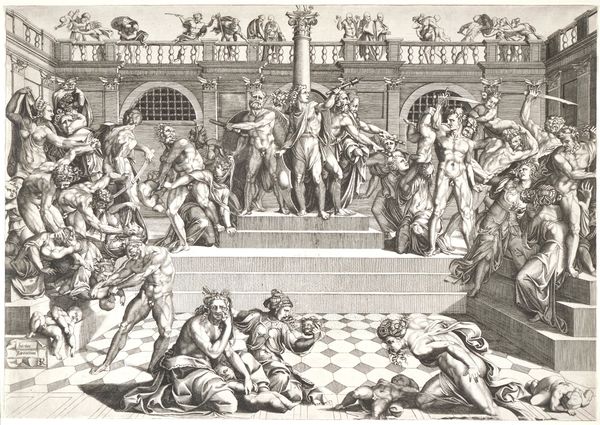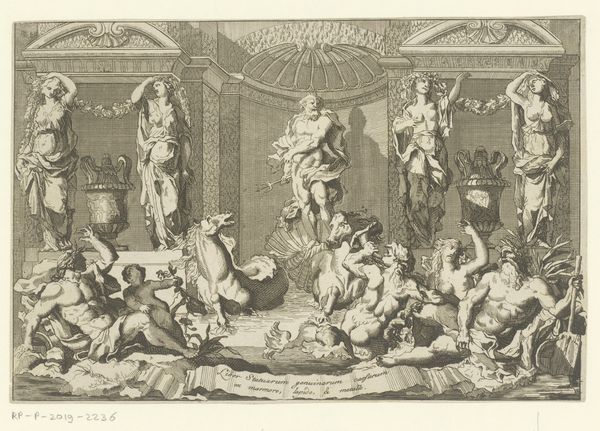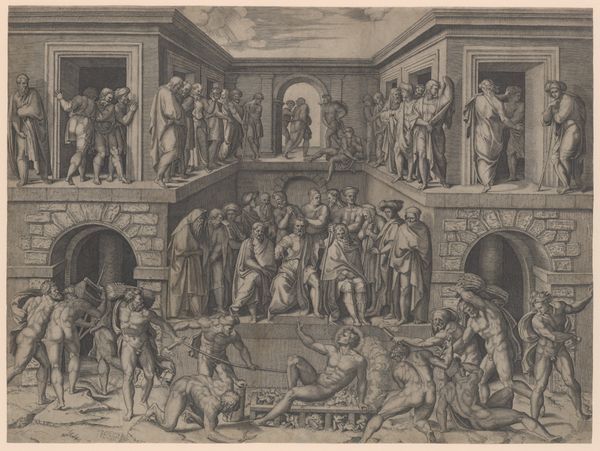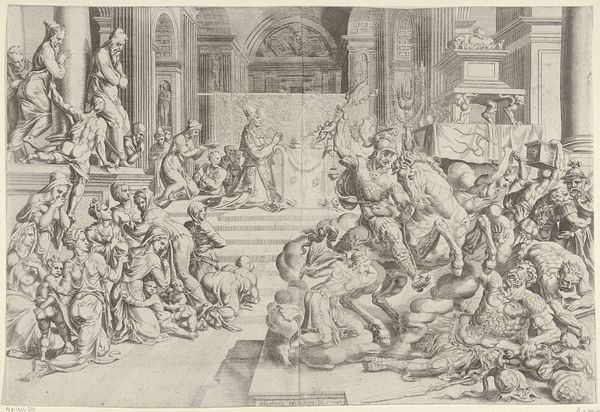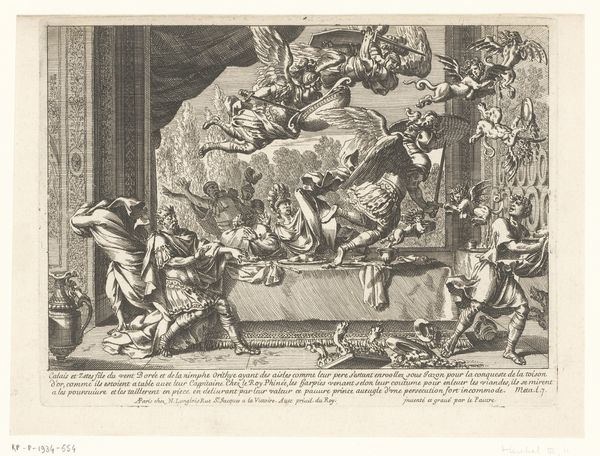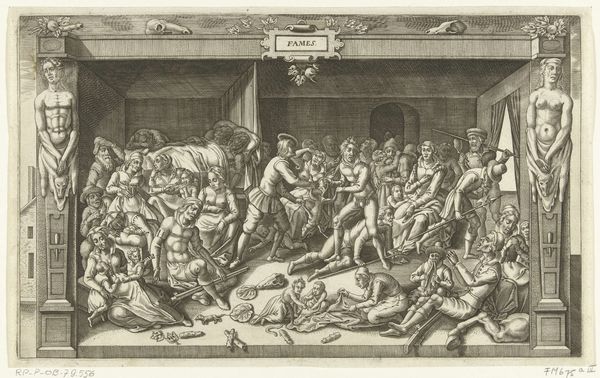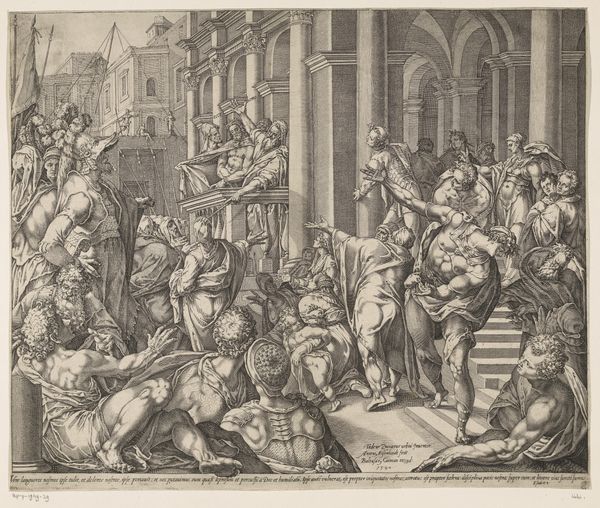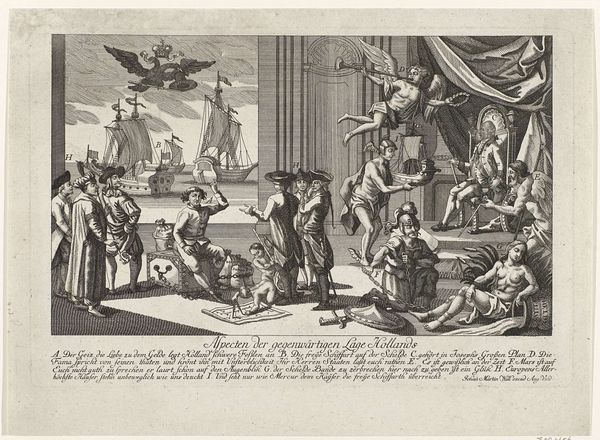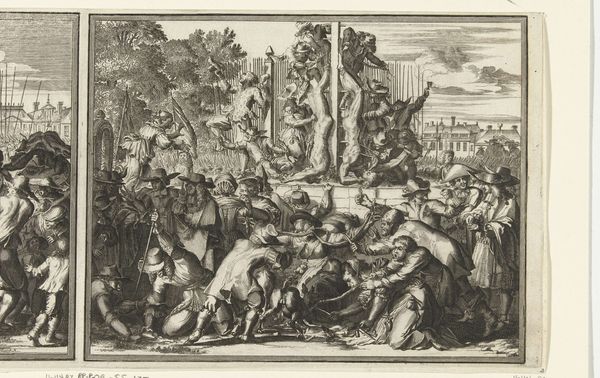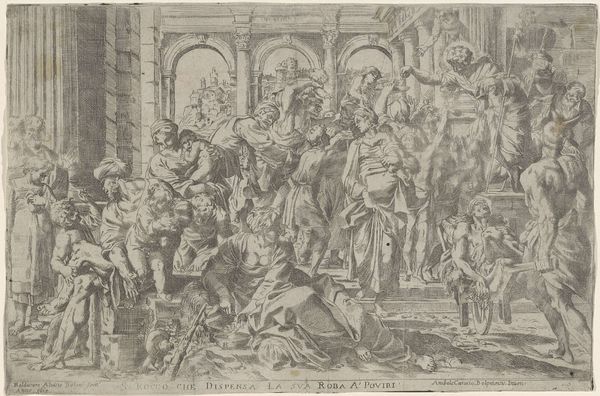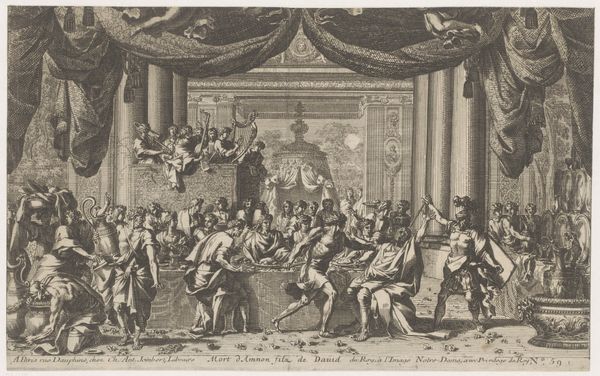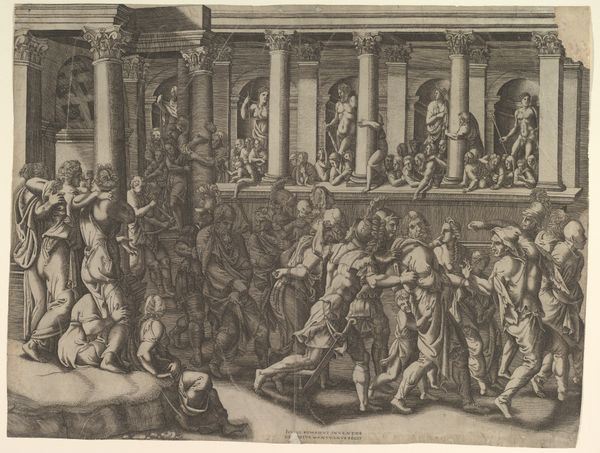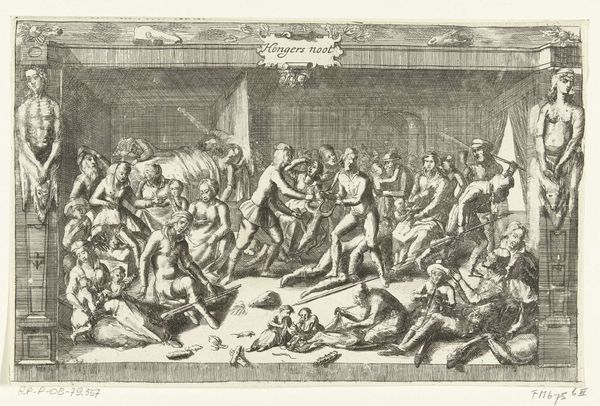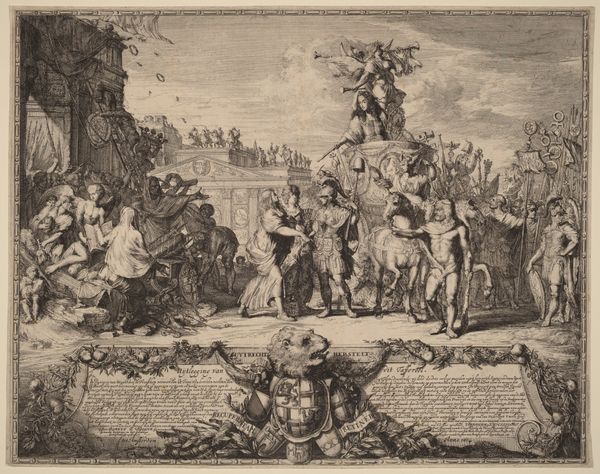
print, engraving
#
narrative-art
# print
#
figuration
#
history-painting
#
italian-renaissance
#
engraving
Dimensions: height 409 mm, width 575 mm
Copyright: Rijks Museum: Open Domain
Curator: Before us hangs "Kindermoord te Betlehem," an engraving made sometime between 1517 and 1565 by Nicolas Beatrizet, here in the Rijksmuseum's collection. Editor: It’s stark. A visceral chaos—bodies interwoven in violence, classical architecture forming a detached backdrop. The stark monochrome enhances the sense of horror. Curator: Beatrizet masterfully employs the visual language of the Italian Renaissance. Observe the robust, muscular figures arranged with studied dynamism. The artist anchors the composition with the geometric regularity of the staircase. Editor: That architecture acts as a visual indictment, doesn't it? This calculated scene of brutality plays out against a grid of power—masculinity sanctioned through Herod's authority. I wonder, who are these Herculean figures perpetrating these horrific acts? Curator: Indeed, note how Beatrizet utilizes light and shadow to sculpt the forms, creating a sense of depth and realism. Consider, too, the use of linear perspective to guide the viewer's eye through the crowded scene. Editor: Perspective here does more than just organize the composition—it draws the viewer directly into this historical and enduring struggle. This slaughter stems from a decree, making it impossible to disassociate the powerful few standing atop the stairs from the terror consuming those below. Curator: And do take note of the print’s graphic quality; Beatrizet's skilled rendering captures both the grotesque details of the violence and the refined elements of the architectural setting. Editor: Precisely, this piece demands we examine how artistic skill might not only reflect a historical episode, but also actively reinforce prevailing norms. Here, we face an unsettling picture of political impunity made enduring through expert Italianate technique. Curator: It's interesting how your point-of-view leads us to scrutinize narrative and context in ways that alter my own reading, usually centered more closely on the construction and balance. Editor: And your attention to construction and visual rhetoric helps us remember the craft, and thus the agency, involved in even seemingly objective documents of our past.
Comments
No comments
Be the first to comment and join the conversation on the ultimate creative platform.
